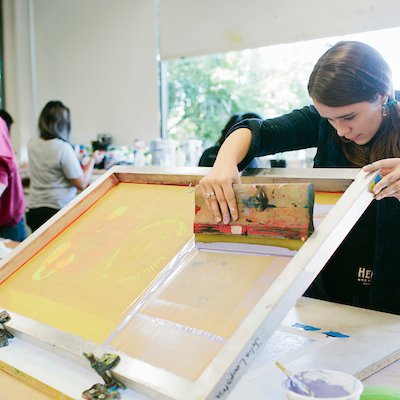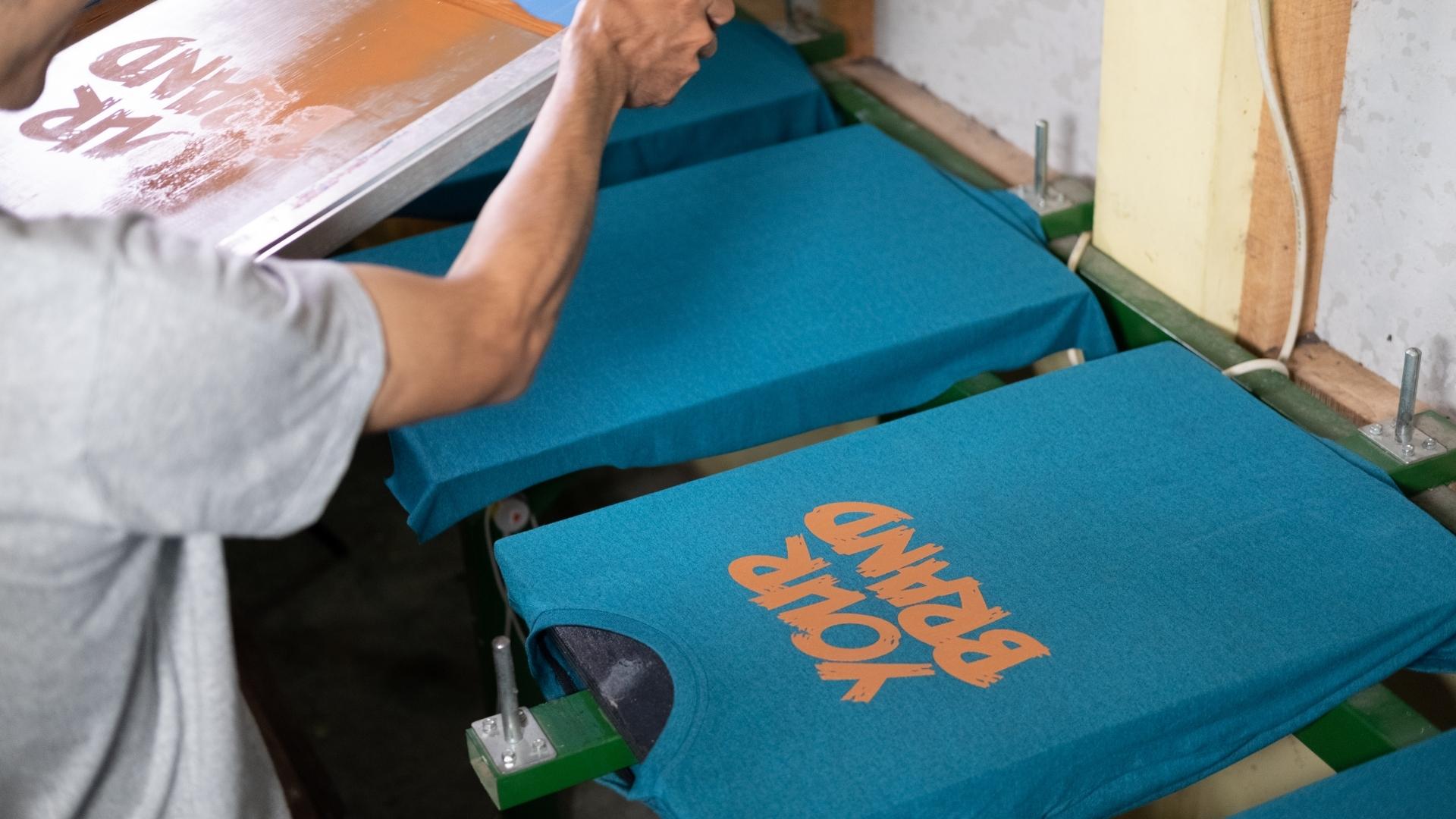The Vital Overview to Understanding Screen Printing and Its Versatile Utilizes
Screen printing has a rich history that goes back to ancient times, developing right into an advanced technique utilized throughout various industries today. This guide checks out the complexities of the screen printing process, outlining its applications in advertising, home, and fashion decoration - 10:9 Design Screen Printing Texas. Understanding these basics can open up innovative capacity for both imaginative and business tasks. The adhering to areas will certainly disclose necessary tips and strategies to enhance one's screen printing undertakings
The Background of Screen Printing
Screen printing has roots that trace back centuries, its evolution shows the technical and imaginative improvements of different cultures. Originating in old China, the technique was initially used for embellishing textiles and later infect Japan, where it became indispensable to Ukiyo-e woodblock printing. The approach moved to Europe in the 18th century, where it got appeal amongst craftsmens and business printers. The creation of picture solution in the 20th century reinvented screen printing, enabling for more intricate styles and greater performance. Artists like Andy Warhol even more drove its appeal, making use of the medium to develop renowned works that blended commercialism and great art. By the late 20th century, screen printing had established itself as a versatile technique, utilized in vogue, marketing, and art. Today, it proceeds to advance, integrating electronic modern technology and expanding its applications across various industries.
The Screen Printing Process Explained
Screen printing transforms artistic visions right into tangible layouts with a collection of exact actions. At first, a picture is developed and after that moved onto a screen, usually constructed from great mesh fabric extended over a framework. A light-sensitive solution is put on the screen, which is exposed to light, hardening in areas not covered by the image. After washing out the unhardened emulsion, a stencil is formed.
Next off, the screen is put over the substrate, whether it be fabric, paper, or another material. Ink is then pressed via the open locations of the pattern using a squeegee, transferring the style onto the substratum listed below. This procedure can be repeated for several colors, requiring separate screens for each tone. Lastly, the printed item is healed utilizing warmth to guarantee the ink adheres effectively, resulting in a sturdy, dynamic design all set for use.
Kinds of Screen Printing Techniques

In addition, specialized techniques, such as discharge screen printing, eliminate color from the textile to develop softer prints, while foil screen printing uses metallic foil to accomplish a shiny surface (10:9 Design Embroidery). Each strategy supplies distinct attributes, accommodating various creative requirements and manufacturing ranges, eventually increasing the opportunities within the screen printing domain
Applications of Screen Printing in Various Industries

Furthermore, the signs and advertising and marketing industries make use of screen printing for producing appealing displays and banners. This technique allows for vibrant shades and elaborate layouts that record interest. In electronic devices, screen printing is used for using conductive inks to circuit boards, essential for element connections. The home décor market embraces screen printing to create unique styles on fabrics and wall art. Generally, website screen printing acts as an important device throughout diverse areas, enhancing items with personalized and aesthetically attractive graphics.
Tips for Successful Screen Printing Projects
While taking on a screen printing job, careful interest to information can considerably boost the last end result. First, selecting top notch materials is vital; this consists of the screen, inks, and substrates. Making use of suitable mesh counts can influence ink deposition and information resolution. Prep work is just as crucial; detailed cleansing of screens and appropriate exposure times assure crisp prints.
Next, precise enrollment is critical for multi-color prints. Using placement devices can aid accomplish precise layering. Additionally, screening prints on scrap materials before production aids recognize prospective issues without losing resources.

Often Asked Concerns
What Materials Are Finest for Screen Printing on Fabric?
Cotton and polyester blends are ideal for screen printing on textile because of their resilience and ink absorption. Furthermore, specialty fabrics like silk or canvas can generate one-of-a-kind structures and surfaces, boosting the total style top quality.
How Do I Clean and Maintain Screen Printing Devices?
To cleanse and preserve screen printing devices, one ought to routinely clean screens with appropriate solvents, inspect squeegees for wear, lube relocating components, and shop all products in a dry, dust-free environment to extend their lifespan.
What Are the Environmental Influences of Screen Printing?
Screen printing can have considerable ecological impacts, consisting of chemical waste from solvents and inks, water use throughout cleansing processes, and energy usage. Lasting techniques and environmentally friendly products are crucial for minimizing these adverse impacts.
Can Screen Printing Be Done in the house Efficiently?
Screen printing can be properly done at home with the appropriate products and techniques. Enthusiasts can produce top quality prints, though success relies on their skill degree, equipment, and understanding of the procedure included.
What Are the Costs Connected With Beginning a Display Printing Business?

Starting a screen printing business entails costs for devices, products, and work space. Initial expenditures commonly vary from a few hundred to a number of thousand dollars, relying on the range, high quality of machinery, and preferred manufacturing ability.
Screen printing has an abundant background that dates back to ancient times, progressing into a sophisticated technique made use of throughout numerous industries today. An additional technique, rotating screen printing, uses cylindrical displays, facilitating continuous printing on material rolls, therefore enhancing efficiency for large manufacturings. Furthermore, specialty techniques, such as discharge screen printing, eliminate dye from the textile to develop softer prints, while aluminum foil screen printing applies metal foil to accomplish a shiny surface. In the fashion sector, screen printing is commonly made use of to create dynamic layouts on garments, allowing brand names to showcase their special designs. Cotton and polyester blends are optimal for screen printing on material due to their sturdiness and ink absorption.